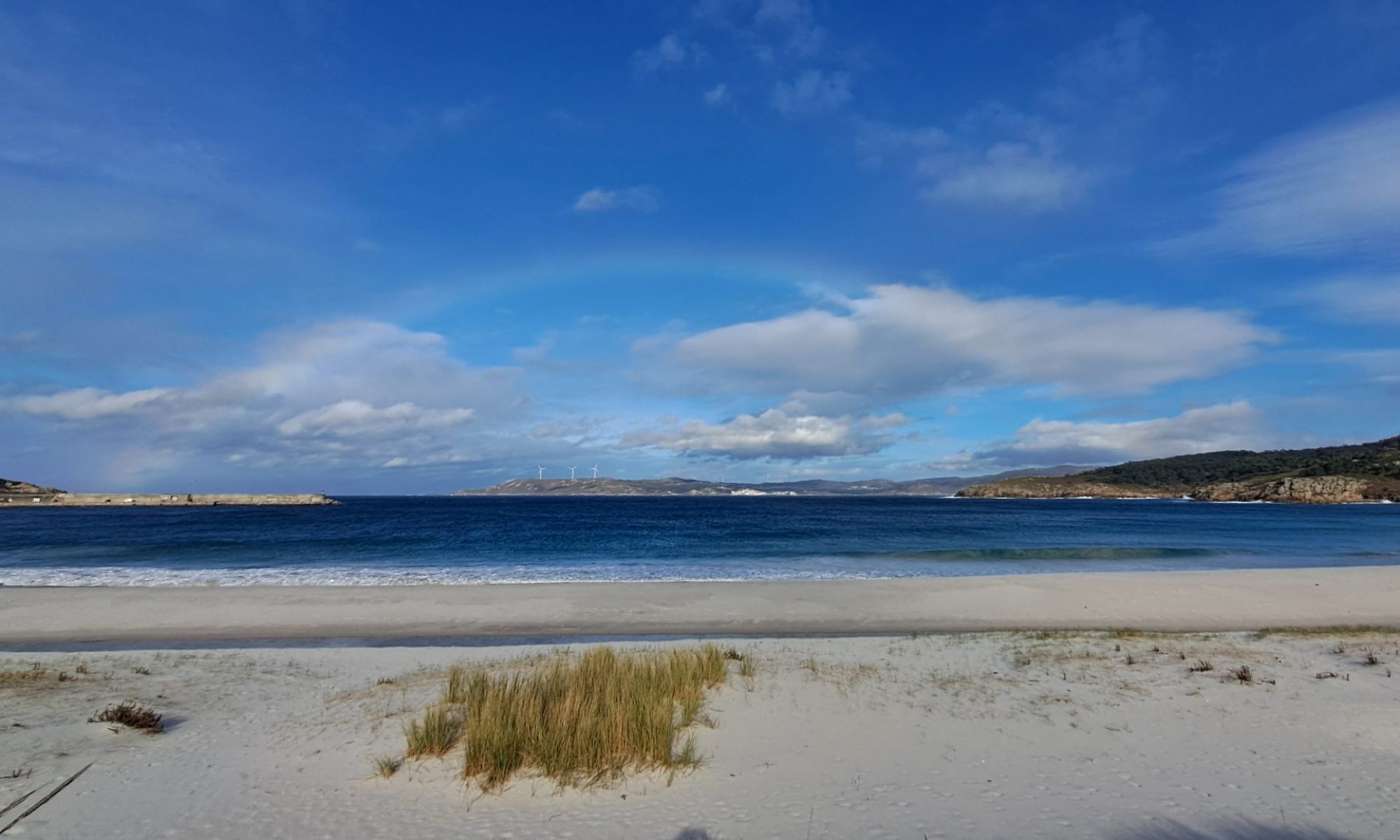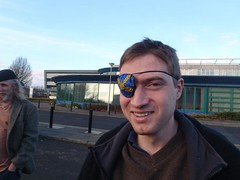I passed my D1 minibus licence 🙂 This makes me very happy because I have a mild brain injury and this shows I can still learn and achieve new things.
It is quite a faffy thing to do because of the limited number of driving schools that do D1 licences. The law in the area of what counts and what does not is very fuzzy with many unclear cases.
For many people it’s unclear if you need to apply for a category D1 licence to drive a minibus. If you passed your UK drivers licence before 1997 you get a D1 for free. You don’t need it if your minibus is under 3.5 tonnes max load and you are not driving it for “hire or reward” (and are over 21, had your licence for two years). We phoned up the DVLA complaint center and asked if I could drive the bus and they said it was fine to do so, which it wasn’t, so even the DVLA don’t understand the rules. Then there’s a section 19 permit which lets some non-commercial organisations let people drive and be paid but again only under 3.5 tonnes max load busses. The definition of “hire or reward” is very unclear as a general point of law and it’s unclear if it covers a sports club such as mine where you have to pay membership or if it covers fuel expenses. I’m told that North Lanarkshire do not require their drivers to have a D1 while South Lanarkshire do which shows how unclear the rules are.
To start with you need a D4 medical form signed from your doctor, which costs about £100. This tests your eyesight and general health.
Then you need to apply for a provisional licence. Pleasingly this is free.
Now you need to do a theory test for a PCV. A PCV is a fancy name for a bus: a Passenger Carrying Vehicle. (Cost £35). Incidentally the fancy name for a lorry is LGV for Large Good Vehicle now, for some reason the term HGV for Heavy Goods Vehicle is deprecated. The theory test is much the same as for a car, lots of multiple choice questions.
A read over of the Official DSA Theory Test for Large Vehicles will tell you all you need to know. (Cost £11.50) It’s in the building of a company called Pearson in Union Street in Edinburgh and you sit at a computer and click on answers then get your result straight away.
There is also a separate hazard perception test (Cost £15) you need to book onto then go on another day to the Pearson centre and click. There are a few websites that show the sample videos (probably illegally) but in low quality which meant I didn’t get a high mark on any of the websites, but the real videos are in higher quality so I passed without a problem. It’s quite easy to pass, you don’t get marked down for clicking if there’s no hazard so you just click every time something moves and you’ll get it fine.
Now you need to get some minibus driver training. There are only two options for minibus learning near Edinburgh that I could find.
The first is CTTS (commercial transport training services) run by a guy called Jim and his associate Jim in Bathgate. They do two half days training and an assessment day for £690. I went on their training and assessment but screwed up on the first assessment with not joining a dual carrageway properly and making another vehicle slow down, tsk. I went for another assessment with them but this time they screwed up and gave me an incorrect time for the assessment. Although I made it to the test centre in time I wasn’t in a state of mind to pass and failed straight away. I refused to pay so alas fell out with one or both of the Jims.
I found a guy who trades as Drive me Bananas who seemed friendly on the phone and can do the training but doesn’t have a bus to train in. Can I use my bus to train in? Yes but not to assess in because the assessment needs it to be over 4 tonnes and with special mirrors for the assessor to use. Can I hire one? No hire companies don’t let provisional drivers in their busses and they’d still need the mirrors.
Looking around for other instructors all I could find is GTG (used to be Glasgow Training Garage I think) which is a company owned by Arnold Clark and do a bunch of workplace training courses in computers, management, driving and vehicle mechanics. I think many of the students are Arnold Clark’s own apprentices. They only have one minibus in Scotland which is based in Glasgow so I had to go through to Glasgow for an initial assessment (cost £39). They said my driving was perfectly good and recommended I only have one lesson to tidy it up and then go for assessment. They charged me a hefty £800 for a full day’s training and following day’s assessment. Fortunately I could go to their site by Hermiston Gate in Edinburgh for the main training. Turns out they just contracted out the training to Billy Copeland who came through from Ayrshire for it (so it would probably much cheaper to go direct to him). Billy gave me an intensive one day of training after which I was knackered but learnt a bunch of important things.
Things I learnt were…
- Check your left mirror after every fourth parked car and after any notable hazard or potential hazard, this is the follow through
- When overtaking a vehicle on the motorway time yourself against a marker by saying “only a fool breaks the two second rule” and watch in mirror when the overtaken vehicle passes it, only move back in if it’s a 2 second gap.
- Don’t be afraid to make progress, once you’ve passed a hazard you should be aiming to get up to the speed limit
- Stop at lights so you can still see the white line in your windscreen
- Use the wide angle mirror on the wing mirrors when joining a motorway
- when going round a blind corner on a single track road (or a bridge) beep your horn twice to let oncoming drivers know you’re there
- on a single track roundabout keep central in the lane to discourage over or under-taking
- when stopping put on hand break then neautral
- Put on sidelights when driving a minibus, since 2011 vehicles have sidelights that are always on anyway
Then it’s time for the test. Get the official guide to driving buses and coaches for £10.87. This is held at the VOSA test centre in Livingston. The test starts with a few verbal theory questons: show me where the fire extinguisher is, show me and tell me the maximum passanger limits, tell me about the tyre treat (needs to be 1.6mm for a minibus although all the books say 1mm which is for full size busses), tell me how to test the oil level (engine needs to be cool, take dip stick and wipe clean, put in out again and read).
Next there is a reversing maneuver in the test center where you go forward past a parking cone then reverse to meet a point beside your starting point. It’s simple but surprisingly easy to get disorientated and make a mistake.
There is an hour long drive although it feels like three hours because it needs a lot of concentration. The driving has to be a high standard of course. The instructors have a number of test routes that go through the fun variety of streets nearby, village high streets, school, residential, rural streets, dual carrageways, motorways, and lots and lots of roundabouts. There’s a couple of maneuvers, you need to stop at the side of the road and you need to stop at a bus stop as if to pick up passengers. Again these are simple but it’s easy to forget a part of the maneuvers. After picking up passengers you much check your central rear view mirror to check your passengers are all seated and once moving off you need to check your left mirror again to check nobody has held onto the door that you are about to drag along the road.
When you return to base the assessor spends a minute on his paperwork while you sweat and get either an “I’m afraid you haven’t passed” or “I’m please to tell you you have passed” and then you go over any faults you made.
Anyone driving for hire or reward (whatever that means) must do a Driver CPC test every few years which involves another theory test involving case studies and a practical test involving discussing how to stop illegal immigrants playing stowaway on your bus. There is also a Midas test which many local authorities did use but I think that’s obsolete (although like much of this it’s unclear).
Total cost £1702.31. Golly. Obviously it would have been £800 cheaper if I’d passed first time and probably if I’d found someone other than GTG to use but they did get me to pass the test.
If you want to take a trailer over 750Kg you need to do another test D1+E which involves a similar practical test. There are approximately no trainers in Scotland who can train this.
I feel I am a better driver for doing this and I don’t begrudge the government for making me do it but I am surprised at the lack of driving schools who can train you, goodness knows what schools will do when their older teachers die out.











